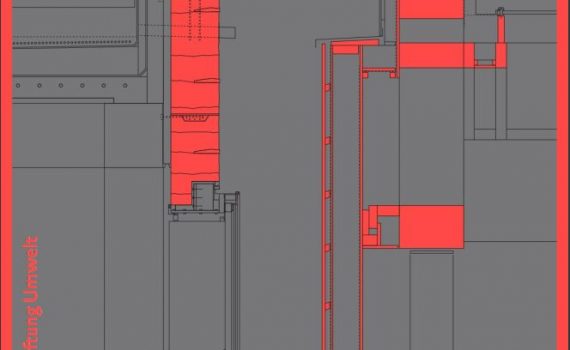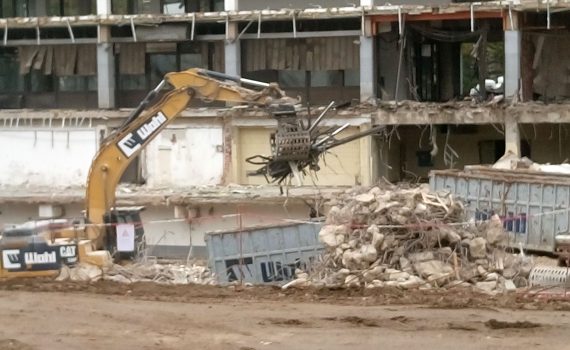Kategorie für Blog: Tools
The bioeconomy can be a central building block for the transformation of our largely coal, oil and gas-based economy. However, renewable raw materials and synthetic carbon compounds are scarce and expensive. They should be used in areas such as the chemical industry - not as energy sources. For the shift from a fossil-based economy to a bioeconomy to succeed, fossil carbon must also become more expensive. The ifeu now presents the results of four trend-setting studies.
The "Climate Adaptation Check" is a new orientation aid for NRW municipalities. The federal state passed the first climate adaptation law in Germany in 2021. The check supports NRW municipalities in implementing the new requirement for consideration. Berlin/Cologne. The consequences of climate change have long been felt in German municipalities: more frequent heavy rainfall events, flooding, storms as well as heat waves and prolonged drought. Cities, [...]
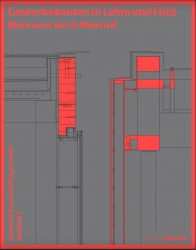 Author of the book review: Roman Schaurhofer, Vienna
The construction volume "Commercial Buildings in Clay and Wood - Added Value through Material" was published in 2020 by Sabine Djahanschah of the Deutsche Bundesstiftung Umwelt (German Federal Foundation for the Environment) at Verlag Detail. The publication, which appeared in book form, deals with the use of the building materials wood and clay in the construction of commercially used buildings. To this end, six buildings with commercial use were analysed in terms of their architectural construction and technical quality features and evaluated with the help of measurements, surveys and life cycle assessments.
Author of the book review: Roman Schaurhofer, Vienna
The construction volume "Commercial Buildings in Clay and Wood - Added Value through Material" was published in 2020 by Sabine Djahanschah of the Deutsche Bundesstiftung Umwelt (German Federal Foundation for the Environment) at Verlag Detail. The publication, which appeared in book form, deals with the use of the building materials wood and clay in the construction of commercially used buildings. To this end, six buildings with commercial use were analysed in terms of their architectural construction and technical quality features and evaluated with the help of measurements, surveys and life cycle assessments.
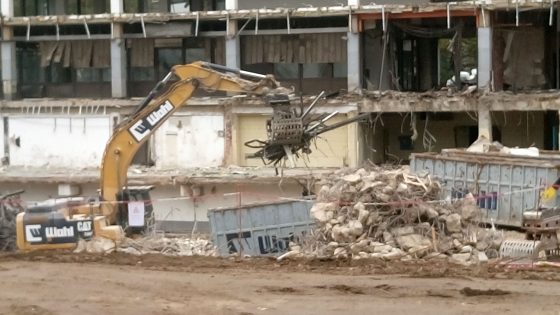 Sustainable development in Germany is inconceivable without a resource-efficient construction industry. The new expert recommendation VDI-EE 4802 Sheet 1 explains in a practical way how to apply the concept of resource efficiency in the life cycle of buildings. To this end, it breaks down the tasks and scope for action of the individual players in the construction process. Using examples of increased material, energy and space efficiency, the expert recommendation supports the entire planning process towards a resource-efficient building.
Sustainable development in Germany is inconceivable without a resource-efficient construction industry. The new expert recommendation VDI-EE 4802 Sheet 1 explains in a practical way how to apply the concept of resource efficiency in the life cycle of buildings. To this end, it breaks down the tasks and scope for action of the individual players in the construction process. Using examples of increased material, energy and space efficiency, the expert recommendation supports the entire planning process towards a resource-efficient building.
 A broad alliance of actors from civil society, science, industry and practice is calling on the German government to promote the climate-friendly construction, maintenance and demolition of buildings. Up to now, only the use phase of buildings has been taken into account in state subsidies for buildings and in the Building Energy Act. There is a complete lack of specifications and consideration of the climate impact of building materials and the construction and disposal of buildings - despite the fact that the construction sector, with its upstream and downstream processes, contributes around 8 percent to German greenhouse gas emissions.
A broad alliance of actors from civil society, science, industry and practice is calling on the German government to promote the climate-friendly construction, maintenance and demolition of buildings. Up to now, only the use phase of buildings has been taken into account in state subsidies for buildings and in the Building Energy Act. There is a complete lack of specifications and consideration of the climate impact of building materials and the construction and disposal of buildings - despite the fact that the construction sector, with its upstream and downstream processes, contributes around 8 percent to German greenhouse gas emissions.
 The ecological model settlement on a former barracks site in Munich sets new standards in timber construction. Various timber construction methods and building types up to seven storeys are being tested side by side in eight building projects with the aim of a final scientific evaluation. Timber frame, timber frame and timber hybrid construction methods are being used.
The ecological model settlement on a former barracks site in Munich sets new standards in timber construction. Various timber construction methods and building types up to seven storeys are being tested side by side in eight building projects with the aim of a final scientific evaluation. Timber frame, timber frame and timber hybrid construction methods are being used.
 Since April 2020, the Öko-Institut has been conducting research into how urban neighbourhoods can be sustainably transformed, using two neighbourhoods in the swarming city of Darmstadt as examples, in the project Transformative Strategies for Integrated Neighbourhood Development (TRASIQ 2). The Federal Ministry of Education and Research is funding the project, which is led by the Öko-Institut and involves the City of Darmstadt, the Institute for Regional and Urban Development Research (ILS) and the "Team Ewen" agency.
Since April 2020, the Öko-Institut has been conducting research into how urban neighbourhoods can be sustainably transformed, using two neighbourhoods in the swarming city of Darmstadt as examples, in the project Transformative Strategies for Integrated Neighbourhood Development (TRASIQ 2). The Federal Ministry of Education and Research is funding the project, which is led by the Öko-Institut and involves the City of Darmstadt, the Institute for Regional and Urban Development Research (ILS) and the "Team Ewen" agency.
Mobility, heat and living space
The project focuses on the research topics of mobility, heat supply and efficient use of living space. Heat supply is an important key to climate-friendly living. How and where, for example, can district heating be expanded in existing properties? How can we increase the share of renewable energies in the heat supply? The size of the living space also contributes to how environmentally friendly a person lives. What needs to be done to ensure that people have the living space they need in their particular phase of life through intelligent apartment swaps? How can neighbourhoods be redesigned so that residents can organise their mobility ecologically? With the architect Amandus Samsøe Sattler, the German Sustainable Building Council - DGNB e.V. has a new president. In this role, he succeeds Prof. Alexander Rudolphi, who will continue his work on the association's executive committee. The change was announced today during the DGNB Sustainability Day in Stuttgart. The election was held on the eve of the event by the ten members of the DGNB Executive Committee. Samsøe Sattler will initially take over the office until the next DGNB general meeting in the middle of next year.
With the architect Amandus Samsøe Sattler, the German Sustainable Building Council - DGNB e.V. has a new president. In this role, he succeeds Prof. Alexander Rudolphi, who will continue his work on the association's executive committee. The change was announced today during the DGNB Sustainability Day in Stuttgart. The election was held on the eve of the event by the ten members of the DGNB Executive Committee. Samsøe Sattler will initially take over the office until the next DGNB general meeting in the middle of next year.
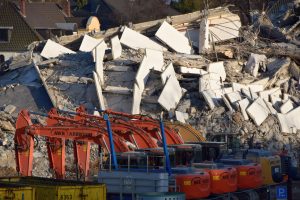 Zur heutigen Kabinettssitzung und der dabei geplanten Befassung mit dem Entwurf eines Deutschen Ressourceneffizienzprogramms III (ProgRess III) erklären Dieter Janecek, Sprecher für Industriepolitik und digitale Wirtschaft, und Dr. Bettina Hoffmann, Sprecherin für Umweltpolitik und Umweltgesundheit:
Mit ProgRess III tritt die Bundesregierung auf der Stelle. Zwei Ressourceneffizenzprogramme der Bundesregierung konnten nicht verhindern, dass der deutsche Rohstoffverbrauch weiterhin steigt. Es ist absehbar, dass auch das dritte Ressourcenprogramm der Bundesregierung daran nichts ändert. Auch ProgRess III bleibt ein längliches Sammelsurium von Plänen, Ankündigungen und Prüfaufträgen.
Zur heutigen Kabinettssitzung und der dabei geplanten Befassung mit dem Entwurf eines Deutschen Ressourceneffizienzprogramms III (ProgRess III) erklären Dieter Janecek, Sprecher für Industriepolitik und digitale Wirtschaft, und Dr. Bettina Hoffmann, Sprecherin für Umweltpolitik und Umweltgesundheit:
Mit ProgRess III tritt die Bundesregierung auf der Stelle. Zwei Ressourceneffizenzprogramme der Bundesregierung konnten nicht verhindern, dass der deutsche Rohstoffverbrauch weiterhin steigt. Es ist absehbar, dass auch das dritte Ressourcenprogramm der Bundesregierung daran nichts ändert. Auch ProgRess III bleibt ein längliches Sammelsurium von Plänen, Ankündigungen und Prüfaufträgen.
Lecture "Can we build our way out of the climate crisis?" from 16 April 2020
Among other things, Schellnhuber calls for "prompt measures to achieve the two-degree target, above all by switching from fossil to renewable energy sources and replacing finite building materials with wood and renewable raw materials."
Since 1 January 2020, all new buildings and general renovations of the BIG Group have been subject to the Group-wide mandatory minimum sustainable standard. The BIG minimum standard goes beyond the legal requirements and ensures that all projects of BIG and its subsidiary ARE achieve the klimaaktiv SILVER standard in any case. The sustainable minimum standard of the Bundesimmobiliengesellschaft (BIG) is a catalogue of criteria that must already be taken into account in the planning process for buildings. This makes the implementation of 43 measures of the BIG Holistic Building Programme (HBP)* and the achievement of at least 750 klimaaktiv points mandatory for all new construction and general refurbishment projects for which a planning invention procedure will be carried out from 2020. By implementing the minimum standard, CO2 emission values are significantly reduced, climate-damaging building materials are avoided and the phase-out of fossil fuels is accelerated.
A research project conducted by natureplus in conjunction with IFEU compares insulation materials with regard to their environmental impact throughout their entire life cycle, including recovery and recycling.

 Which insulation material is the best? This question is extremely popular in the construction industry and can ultimately only be answered in the context of the respective construction. In particular, there has so far been a lack of a holistic overview that enables builders and planners to identify the strengths and weaknesses of the various insulation material alternatives in terms of their life cycle assessment, without having to disregard subsequent disposal.
Which insulation material is the best? This question is extremely popular in the construction industry and can ultimately only be answered in the context of the respective construction. In particular, there has so far been a lack of a holistic overview that enables builders and planners to identify the strengths and weaknesses of the various insulation material alternatives in terms of their life cycle assessment, without having to disregard subsequent disposal.
 27.01.2020 A material revolution that replaces cement and steel with wood in urban construction can have double benefits for climate stabilization. This is now shown in a study by an international team of scientists. First, it can avoid greenhouse gas emissions from cement and steel production. Secondly, it can turn buildings into carbon sinks, since in the construction timber the CO2 is stored. Although the required amount of wood is theoretically available, such an expansion would require very careful sustainable forest management, the authors emphasize.
27.01.2020 A material revolution that replaces cement and steel with wood in urban construction can have double benefits for climate stabilization. This is now shown in a study by an international team of scientists. First, it can avoid greenhouse gas emissions from cement and steel production. Secondly, it can turn buildings into carbon sinks, since in the construction timber the CO2 is stored. Although the required amount of wood is theoretically available, such an expansion would require very careful sustainable forest management, the authors emphasize.
 The share of renewable energies in electricity consumption rises to almost 43 percent. The climate protection successes in the electricity sector are diminished by rising greenhouse gas emissions in buildings and transport. In parallel, public interest in climate protection is rising: since May 2019, it has consistently been the most pressing political issue in the eyes of the population. This is shown by Agora Energiewende's 2019 annual evaluation.
The share of renewable energies in electricity consumption rises to almost 43 percent. The climate protection successes in the electricity sector are diminished by rising greenhouse gas emissions in buildings and transport. In parallel, public interest in climate protection is rising: since May 2019, it has consistently been the most pressing political issue in the eyes of the population. This is shown by Agora Energiewende's 2019 annual evaluation.
 ROBIN WOOD has scrutinized the green electricity offers of 1,200 providers and publishes the results today in the "ROBIN WOOD Eco-Electricity Report 2020.". The environmental organization rates eight offers as recommendable. The current research report was realized with the support of the Open Knowledge Foundation Germany.
ROBIN WOOD has scrutinized the green electricity offers of 1,200 providers and publishes the results today in the "ROBIN WOOD Eco-Electricity Report 2020.". The environmental organization rates eight offers as recommendable. The current research report was realized with the support of the Open Knowledge Foundation Germany.
Senate adopts concrete measures for the next ten years and sets new CO2-targets for 2030 and 2050
 Decentrally generated electricity from renewable energies can cover the demand for electrical energy in Bavaria both in balance and in perspective. This is the result of a joint study by the grid operators Bayernwerk Netz GmbH (Bayernwerk), LEW Verteilnetz GmbH (LVN) and Main-Donau Netzgesellschaft. The Bavarian power grid operators have analysed which development paths are possible for Bavaria with regard to renewable power generation and whether climate neutrality can be achieved in the power sector. The grid operators received scientific support from the Forschungsstelle für Energiewirtschaft e.V. (Research Centre for Energy Economics).
Decentrally generated electricity from renewable energies can cover the demand for electrical energy in Bavaria both in balance and in perspective. This is the result of a joint study by the grid operators Bayernwerk Netz GmbH (Bayernwerk), LEW Verteilnetz GmbH (LVN) and Main-Donau Netzgesellschaft. The Bavarian power grid operators have analysed which development paths are possible for Bavaria with regard to renewable power generation and whether climate neutrality can be achieved in the power sector. The grid operators received scientific support from the Forschungsstelle für Energiewirtschaft e.V. (Research Centre for Energy Economics).
On the occasion of the 30th anniversary of Eurosolar, filmmaker Carl-A. Fechner has created a three-minute film about Hermann Scheer, the founder of Eurosolar.
(6:25 min.) published on 5.11.2019 The city of Eschweiler (North Rhine-Westphalia) has been awarded the "Climate Active Municipality 2019" climate protection prize by the Federal Ministry for the Environment in Category 1: "Resource and energy efficiency in the municipality". The city of Eschweiler is committed to more resource and climate protection with its Factor X construction areas. The prize is awarded by the Federal Ministry for the Environment (BMU) as part of the National Climate Initiative (NKI), which is implemented by the German Institute of Urban Affairs gGmbh (Difu).
Dresden, 22.10.2019 Heliatek, the world's leading provider of organic solar energy solutions, announces that its award-winning technology has been certified by TÜV Rheinland as having a carbon footprint of less than 16 kg CO2e/m2 in a Life Cycle Assessment (LCA). For a sustainable future in an ever more [...]
With the timber construction funding program, the city wants to promote concrete timber buildings, especially in residential construction Timber Construction Guide presents 29 realized and forward-looking timber construction projects in Freiburg More climate protection with the renewable raw material wood. Timber construction in Freiburg is an important instrument for climate protection and indispensable for achieving the city's ambitious climate protection goals. […]
The carbon footprint calculator developed by the ifeu Institute in Heidelberg can be used to calculate the greenhouse gas emissions of food. The website also provides tips and advice on how to become a "climatarian", i.e. how to adopt a climate-friendly diet. The CO2 foodprint is calculated. This is the proportion of one's CO2 emissions that are caused by food. Link www.klimatarier.com/de/CO2_Rechner
According to a new study by EU scientists, one percent of the EU's surface area is enough to cover the community's entire electricity needs with solar power. https://www.solarserver.de/solar-magazin/nachrichten/aktuelles/2019/kw40/europa-unabhaengig-mit-solarstrom.html
From the meeting of the Berlin Senate on 24 September 2019: At its meeting today, the Senate adopted the report to the House of Representatives on "Sustainability in construction: Berlin builds with wood", following a presentation by the Senator for the Environment, Transport and Climate Protection, Regine Günther. The Senate is consistently pursuing the goal of making Berlin [...]
Like the heat register, the solar register is part of the Energy Atlas.NRW, which provides comprehensive information on renewable energies in North Rhine-Westphalia. In addition to the current stock, potential for the further expansion of renewable energies is also presented.
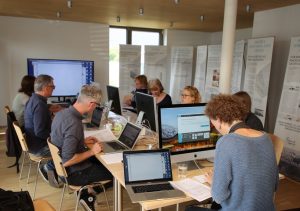 With funding from the federal funding programme "Unternehmen Revier", the Faktor X agency of the development company has developed an internet-based tool for easily calculating the resource efficiency of your own construction project. The tool has now undergone final testing and will be available online from September.
With funding from the federal funding programme "Unternehmen Revier", the Faktor X agency of the development company has developed an internet-based tool for easily calculating the resource efficiency of your own construction project. The tool has now undergone final testing and will be available online from September.
In 2018, Deutsche Bahn fed 57 percent green electricity into the grid. This is an increase of 13 percent in electricity from renewable energies compared to the previous year.
| 2:33 min 12/17/2018 |
The Institute for Solar Energy Research (ISFH) has presented a free tool for the individual design and holistic evaluation of tenant electricity concepts. These offer tenants in apartment buildings the opportunity to benefit from cheap renewable electricity generated on site. However, the economic viability depends on a large number of factors, which is why tenant electricity providers can hardly estimate whether [...]
The study "Greenhouse Gas Balancing of Timber Buildings -Implementation of New Requirements for Life Cycle Assessments and Determination of Empirical Substitution Factors (GHG Timber Construction)" led by Prof. Dr. Annette Hafner (RuhrUni Bochum) has now been published. Download: http://forum-holzbau.com/nl_pdf/nl134_rub.pdf
The 88th Conference of Environment Ministers has just passed a resolution in Bad Saarow on the "Promotion of Building with Wood", which was introduced by Rhineland-Palatinate. The document calls on the federal government to improve the framework conditions for timber construction. As the environmental minister of Rhineland-Palatinate reports, among other things, the positive climate protection properties of renewable raw materials are to be taken into account in the building energy [...]
Since February 2017, the houses of Chiemgauer Holzhaus have been able to distinguish themselves with the RAL quality mark GZ 425. This is because the solid wood houses achieve a GWP (Global Warming Potential) value of less than zero in their carbon footprint. This has been tested by the "Gütegemeinschaft CO2 neutrale Bauwerke in Holz e.V.". Taking into account all the necessary materials, such as [...]





